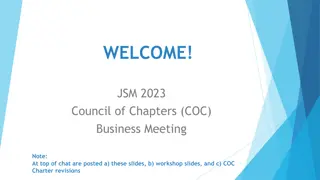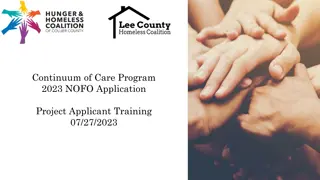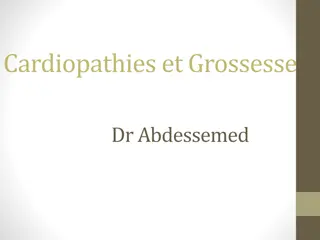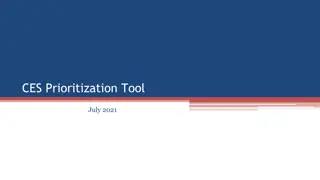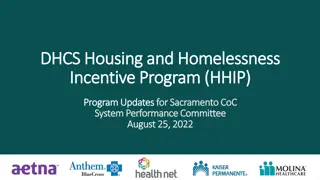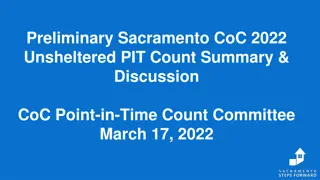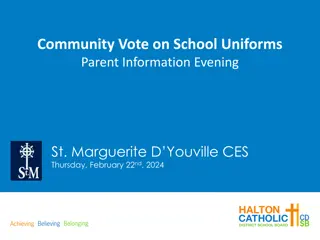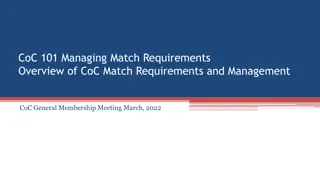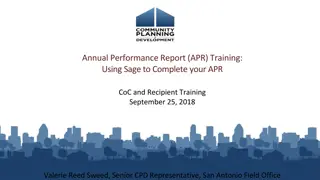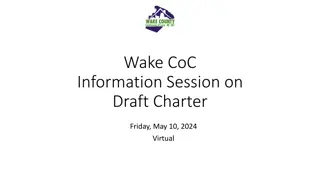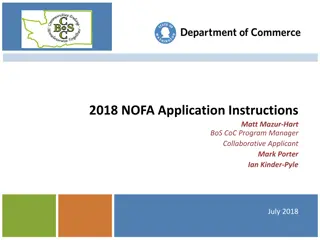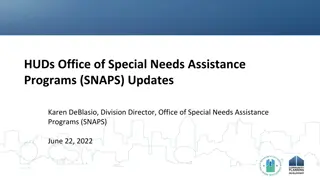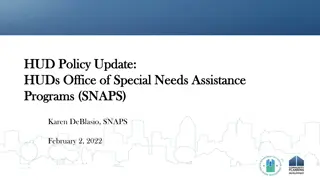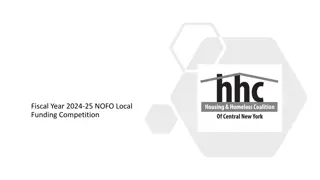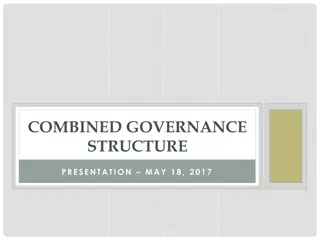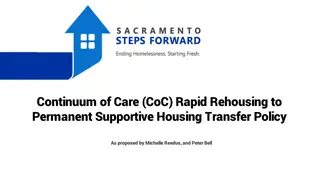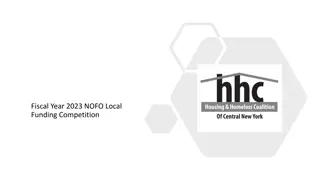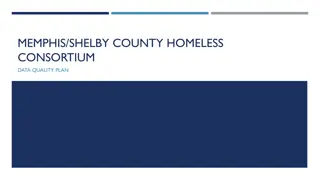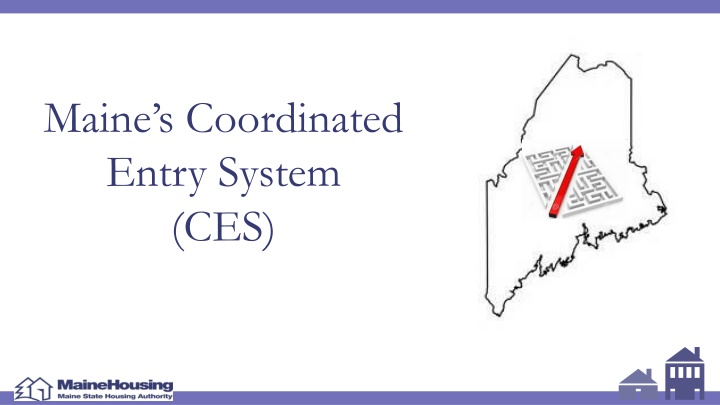
Evolution of Coordinated Entry System in Homelessness Response
Explore the evolution and benefits of Maine's Coordinated Entry System (CES) in addressing homelessness at a community level. Learn how CES has progressed since the HEARTH Act of 2009, leading to improved access to housing and services for individuals experiencing homelessness. Discover how CES benefits public and private funders, housing providers, and community planners by enhancing eligibility compliance, data access, and resource allocation, ultimately promoting fair access to resources and improved outcomes in combating homelessness.
Download Presentation

Please find below an Image/Link to download the presentation.
The content on the website is provided AS IS for your information and personal use only. It may not be sold, licensed, or shared on other websites without obtaining consent from the author. If you encounter any issues during the download, it is possible that the publisher has removed the file from their server.
You are allowed to download the files provided on this website for personal or commercial use, subject to the condition that they are used lawfully. All files are the property of their respective owners.
The content on the website is provided AS IS for your information and personal use only. It may not be sold, licensed, or shared on other websites without obtaining consent from the author.
E N D
Presentation Transcript
Maines Coordinated Entry System (CES)
Messaging from The CoC Board We believe homelessness is a community issue that requires a community response. We believe that by working together we can improve the system and create a better experience for members in our community experiencing homelessness. We believe that together we can combat homelessness and lead the state in Coordinated Entry.
Evolution of CES HEARTH Act of 2009 establishes new system-wide performance measures for homeless Continuums of Care 2011 ESG program interim rule requires CoC to establish a CES 2013/2014 CES implementation included in CoC scoring criteria 2014-2015 HUD releases guidance on implementing a Coordinated Entry System (CES) HUD releases the 2016 Prioritization Notice Each CoC must establish its coordinated entry process by January 23, 2018.
Community Benefits For Public and Private Funders For those experiencing homelessness Locate housing and/or services faster For housing resource providers For CoC or homeless system planners avoid inappropriate or ineligible referrals for their projects; be confident that housing and supportive services projects are serving the intended people ( side doors to projects are closed); identify areas for improvement and take action on better outcomes specific to McKinney-Vento Act system performance measures; be referred only to projects that they are likely eligible for; better manage prospective project participants through a centralized prioritization list; and comply with CoC Program and ESG Program requirements see increased compliance with eligibility requirements; comply with CoC Program and ESG Program requirements; get access to programs once referred; and have access to better data for system and project planning; and improve fair access and ease of access to resources, including mainstream resources (mainstream housing and service providers include public housing improve data for system and project planning and resource allocation to facilitate system change; and standardize understanding of who will be served, which will help system andproject monitoring. appeal rejections by projects through a transparent procedure. experience improved reporting
1. Access Full Coverage P & P R Street Outreach Emergency Services Standardized access and Assessment: 24/7 Access P & P Marketing and Non-Discriminatory Access P & P Safety Planning P & P Privacy P & P Accessibility to local subpopulations Physical Accessibility Connection to Mainstream Resources Understanding the Needs of The Person Not Served
1. Access Why 2-1-1? 2-1-1 is an existing statewide system 2-1-1 is a free, confidential information and referral service that connects people of all ages across Maine to local services. 2-1-1 Maine is based in Maine and available 24 hours a day, seven days a week. 2-1-1 call specialists are highly trained, helpful to callers in need, and know the resources available in Maine 2-1-1 Maine provided after hours coverage to Vermont 211, which included supporting callers experiencing a housing crisis In addition to providing access to Coordinated Entry, 2-1-1 will also be able to identify additional resources to support the client and their needs beyond housing and shelter. Individuals and families in need can reach 2-1-1 via phone, text, email, or by searching our online database.
CES Process Maine Coordinated Entry Workflow This visual tool represents the 4 Core Elements of Coordinated Entry; Access, Assessment, Prioritization, and Referral. The concepts are taken from the HUD TA booklet, Coordinated Entry Core Elements and Maine Uniform Assessment Tool for Coordinated Entry. Domestic Violence Providers Veteran Services Youth Providers
In Process! Example Only Eligibility Criteria Shelter requires/accepts Individuals and/or families who are: Accepts Emancipated HOH under 18? Continuous Residency? (No unauthorized overnights) Must have stable Emotional/Mental Health (not in crisis)? Accepts clients with open or outstanding warrants for arrest? Accepts single males Accepts Single Females Accepts Households with children Peronal Transportation Required? Sobriety Required? Must be able to Live Independently? Accepts Sex Offenders? Accepts Felony Convictions? Resideny Restrictions? Accepts Youth Shelter: Rumford Group Homes PCHC Hope House NA HOME Inc. (Inc. Emmaus) Bread of Life Bangor Area Homeless Shelter NA York County Shelter Programs Inc. Western Maine Homeless outreach Homeless Services of Aroostook Knox County Homeless Coalition Shaw House RCAM Tedford Preble St Florence House NA Joe Kresler NA City of Portland Oxford NA City of Portland Family Milestone NA New Beginnings Mid Maine Homeless Shelter
Common Assessment Tool Preferred Method VI-SPDAT is our common assessment tool Endorsed by the CoC and a results based model We have all of the VI/F/TAY tools you could possibly have If you don t agree with the VI score provide supporting documentation The VI-SPDAT is the entry point to the by-name-lists When do we use it? Generally between 14 30 days into shelter stay Immediately if unsheltered (PATH)
Will be updated for 2017
2. Phased Assessment Assessment Requirements P & P R Additional Consideration to Requirements Provider Concerns The Right Amount of Information Combining Assessment and Eligibility Determination
3. Prioritization Prioritization Requirements P & P R Determining a level Managing the Priority List Using the List to fill vacancies
Prioritization HUD has determined that an effective coordinated entry process ensures that people with the greatest needs receive priority for any type of housing and homeless assistance available in the CoC, including PSH, Rapid Rehousing (RRH), and other interventions.
HUD Prioritization for PSH Beds 1. Chronically homeless* households Chronic= LOT/ episode & with a disability 2. HH w/ a disability* & long periods of episodic* homelessness & severe service needs* 3. HH w/ a disability & no service needs 4. HH w a disability from TH SINGLE PRIORITIZED LIST & NOT BASED ON DISABILITY TYPE BUT ON SEVERITY OF NEED
4. Housing Referral & Follow up Referral Requirements P & P R Eligibility Screening and determination Participating Project List Referral Rejection Protocols Data Management and Efficiency Tracking "Warm Handoff" Referrals Considerations for Subpopulation Lack of housing or Services Concerns Preference and Circumstance Based Incompatibilities
Questions? Key Reference Documents CoC Program interim rule Coordinated Entry Notice Coordinated Entry Policy Brief ESG Program interim rule 2014 Prioritization Notice / 2016 Prioritization Notice Assessment Tools (Expert Convening's Report) Contacts: Cindy Namer cnamer@mainehousing.org Leah Bruns lbruns@mainehousing.org

